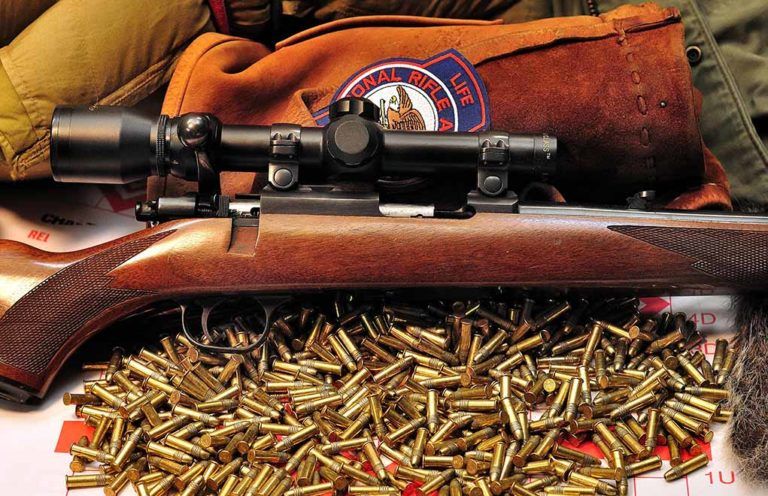
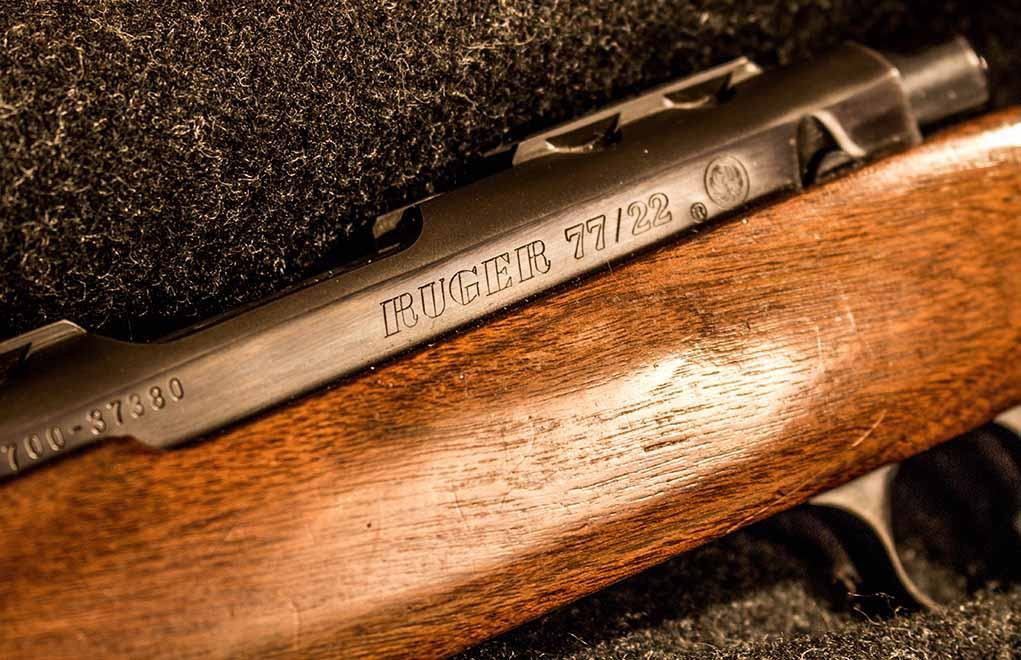
Ruger’s 77/22 offers big game styling in a rimfire configuration. Hands down, it might be the only plinker you'll ever need.
What Makes The Ruger 77/22 A Superior Rimfire:
- Built like a big-game rifle, scaled down for the .22LR
- Walnut stock, checkered fore-end and grip
- 90-degree bolt throw
- Detachable rotary magazine
- Integral scope mounts machined directly on the receiver
- Three-position wing safety
- Two-piece bolt with two locking lugs
It was Christmas Day 1985, and I remember vividly as my dad, Ol’ Grumpy Pants, produced a long, narrow box, hastily — perhaps clumsily — wrapped. At 14 years of age, as if life wasn’t mildly awkward to begin with, I was learning to hunt with him, and each trip to the woods was a new challenge, replete with a healthy dose of nerves because I certainly didn’t want to fail in front of my father. In that era, a hunter had to be 16 years old to hunt big game, and until that Christmas Day I hunted with my Fox double barrel .410 … but all that was about to change.
Inside that amalgam of tape and paper was my first rifle: a Ruger Model 77/22 bolt-action .22 Long Rifle. To me, it was — and still is — a very serious piece of gear. As Dad told me, “It’s built just like a big-game rifle, but scaled down. Safety is in the same place, sights are just like the bigger Ruger rifles, and we can easily scope it.” Having a rimfire rifle built in the manner of a deer rifle, or even one suitable for dangerous game, would prove very important to me later in life.
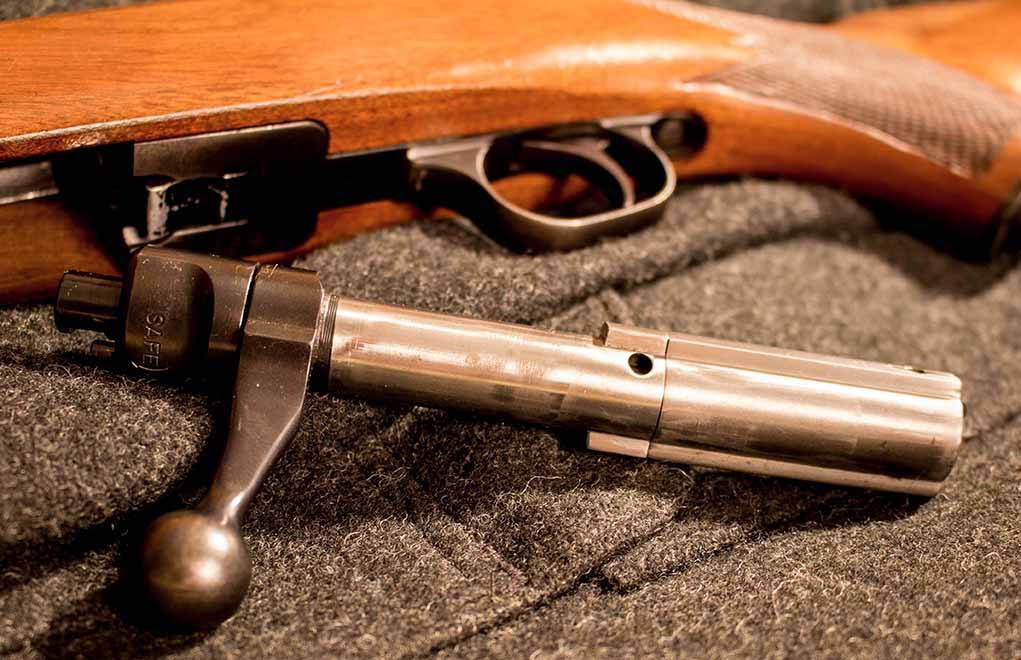
Find Out More About Ruger Firearms
Now, I feel that every hunter, old or young, should own at least one good .22 Long Rifle — it’s one of the handiest cartridges ever developed, and that rifle has been the only .22 I’ve owned, because it serves every purpose I’ve ever asked it to. That rifle has taught me an awful lot about shooting mechanics, about the way a barrel can behave with various types of ammunition, about trigger control, and about so much more. While there are many different makes and models available — including Ruger’s fantastic 10/22, which Grumpy Pants loves — the 77/22 represents everything I want in a rimfire rifle: accuracy, reliability and consistency.
Finding A Friend
My own rifle is in a blued steel/walnut stock configuration, and like the Ruger Model 77, features the integral scope mounts that connect directly to the receiver; 1-inch rings are provided with the rifle. It uses a 10-shot rotary magazine — interchangeable with the 10/22 yet of slightly different dimension in order to mount flush to the stock — that has proved to be very durable over the past 3 decades.
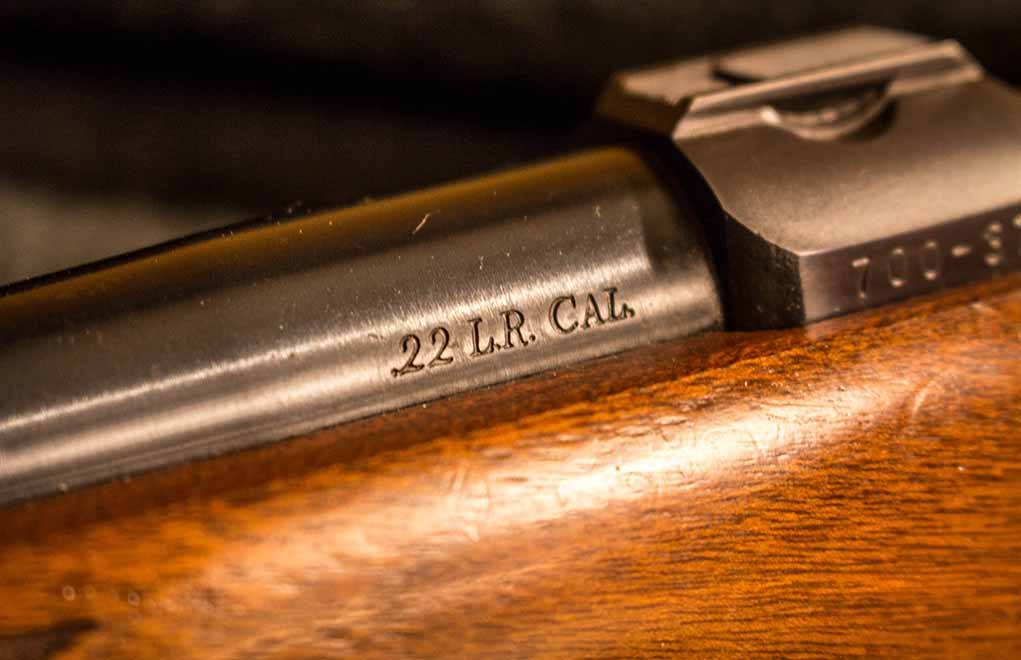
A steel receiver is mated to a 20-inch barrel, complemented by an adjustable, folding rear sight and a barrel band front sight topped with a fine brass bead. Its walnut stock — checkered at the forend and pistol grip — has a plastic grip cap and buttplate in addition to steel sling swivels. A three-position wing safety, identical to the Ruger 77 centerfires, is located at the rear right side of the receiver. A two-piece bolt with spring loaded ears — for proper loading and extraction — runs smoothly at a 90-degree bolt throw. There are two locking lugs just behind the joint in the bolt.
Its trigger, while non-adjustable, is smooth — there’s a small amount of creep, but it breaks crisp enough to print accurately. Again, this little rifle has all the attributes of a big game rifle, and for years it mated with my Ruger 77 in .308 Winchester for an effective one-two punch.

I’ve taken this rifle on enough memorable hunts that it means as much to me as my .404 Jeffery: It has taken coyote, fox, rabbits, squirrels and many more small game species. But, unlike big game, where the conformation of horns or antler comes flooding back to mind, it was the company on those hunts that come back to my mind when I pick the rifle up. Dad would take me in the back woods behind the house we lived in, and it was there that I learned how to snipe squirrels in the autumn. Dad insisted on head shots only, so I would practice my marksmanship at our backyard range. Ammunition was cheap then, even for a boy of 14 who only worked weekends. I learned how to properly adjust iron sights with this rifle, as well as sit down with my father to evaluate different brands and types of ammunition to see which performed best in this rifle.
More On Rimfires:
- The .22 LR: Mini, Mighty And Many
- Best .22 Suppressor Choices To Mute Your Plinker
- The Quintessential 22 Pistol: The Colt Woodsman
- Collector’s Corner: The Browning SA-22
- The .22 LR For Self Defense: Good, Bad Or Crazy?
As I got older and was able to join my relatives and friends on deer hunts, the little .22 saw less action, but I always made it a point to join my dad or maternal grandfather for squirrel and rabbit hunts. Those cold, sunny winter days were great fun: We could stalk cottontails as they came out of their holes to sun themselves, and I remember all the stories I’d hear about the Depression as we’d clean the rabbits. At the risk of getting overly nostalgic, this rifle is more than a rifle — it’s a memory vault.
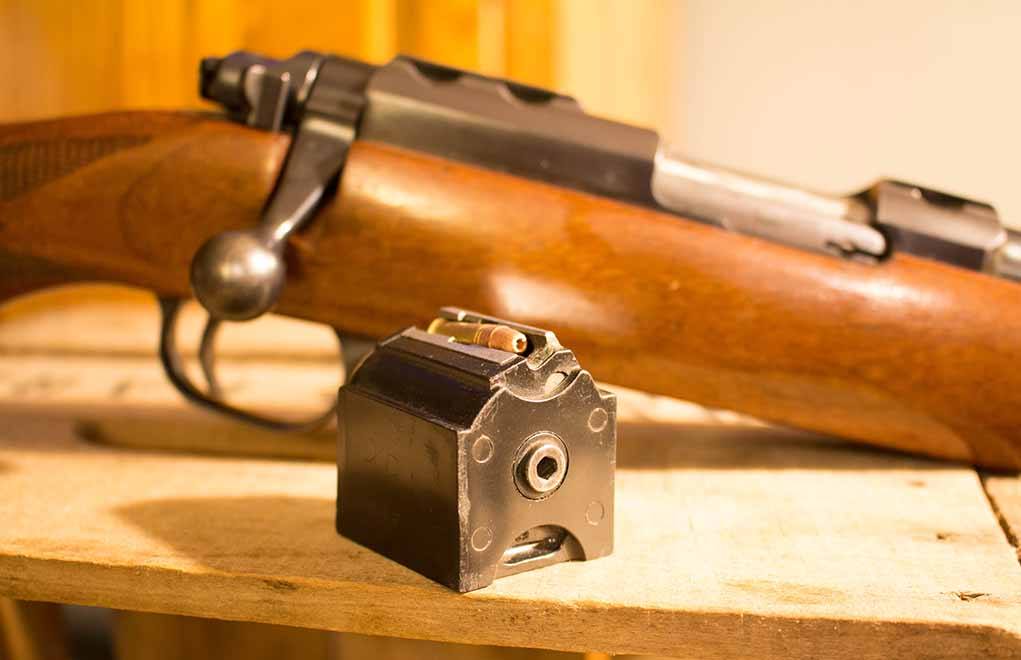
As time passed, the rifle became a companion in the truck. Dad’s barn suffered the effects of the Great Red Squirrel invasion of 2010: holes were bore into doors and walls, soffits were chewed, property destroyed, war declared. Those reds were reinforced by a battalion of chipmunks — invariably drawn in by the allure of chicken feed — so I called upon the 77/22 to repel boarders. It took nearly a box of Remington Thunderbolts before the enemy was eradicated, but I sure had fun with my rifle. It obtained its fair share of dings and scratches along the way, but was there when opportunity knocked.
I had mounted a Leupold Vari-X 3 6.5-20x40mm AO riflescope for an article I was writing to evaluate accuracy of some Match ammunition, when one snowy afternoon at the office I heard Grumpy Pants holler, “coyote!” Dad and I are business partners, you see, and our land surveying office occupies the basement of his house, in a very rural location, replete with a 100-yard range just out the back door, and behind that is the woods.
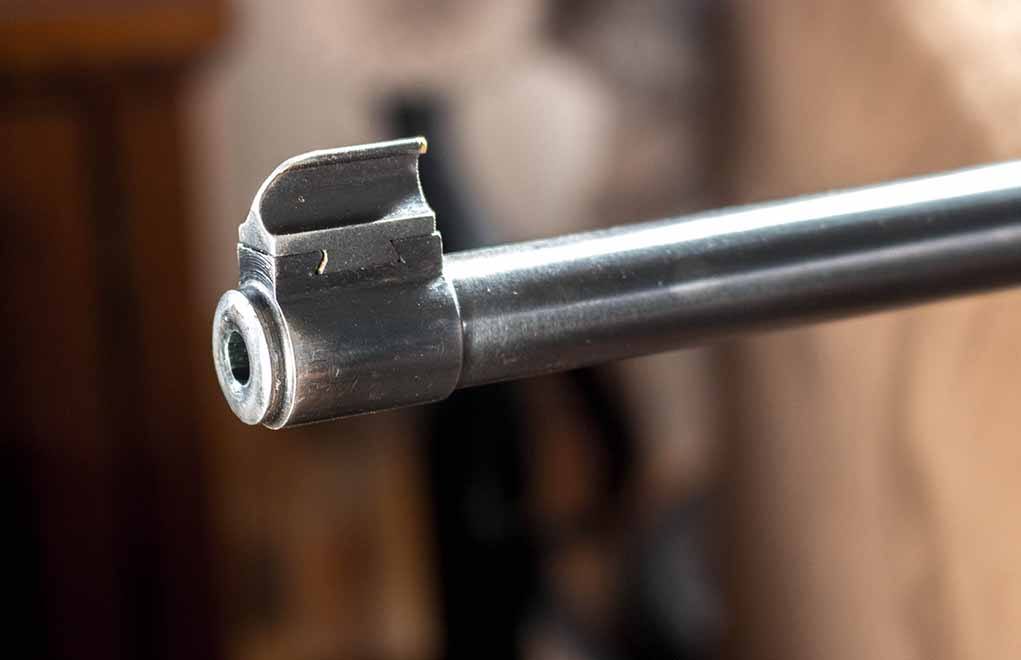
Ol’ G.P. has both homing pigeons and chickens, and they are a constant magnet for predators, so when they’re in season, there’s a bounty on their heads. Time being of the essence, all I could get my hands on was the 77/22. I saw the coyote as it became aware of what I was up to and was desperately trying to make a hasty exit. I shouldered the rifle.
“Too far,” announced G.P., but I pretended not to hear him. I broke the trigger once I had the holdover I wanted, and to even my surprise, the coyote hunched up hard and fell 15 yards later. The shot had been at a measured 158 yards, and while there may have been more than just a little luck involved, the 100-yard targets with that big scope onboard showed me just how accurate a good .22 can be at those distances.
The Gateway Cartridge

As Africa and I entered a committed relationship, the true big-bore rifles became some of my favorites. Shooting them at the range in preparation for a safari can become a challenging proposition, especially when at the bench doing load development. I’m not particularly recoil sensitive, but 30 rounds of .404 Jeffery, .416 Remington or .470 Nitro Express per session can take its toll on any shooter. Oddly enough, I make sure the little 77/22 comes along on each of the big bore sessions. In between groups of the big stuff, I take the time to keep my form proper by shooting a five-shot group with the .22LR; it has been a great help in avoiding the development of a flinch — primarily during bench work.
Additionally, when I’m working with the big iron-sighted guns such as my Heym 89B .470 double, shooting the 77/22 without a scope is an inexpensive and highly efficient means of training for an iron-sighted hunt. Sadly, the art of shooting an iron-sighted rifle is a fading discipline; while I’m a huge proponent of modern high-quality scopes, I do enjoy the close proximity of hunting with a well-stocked iron-sighted rifle. Using my 77/22 at 50 yards on small targets helps me train to stay focused and maintain the proper visual form, without spending $5-$10 per squeeze of the trigger. When it comes time to practice with the big-bore double or bolt gun, the prior work with the 77/22 makes the real deal much more effective.

I’ve also used a Bushnell Rimfire scope, with an elevation turret marked for the trajectory of a common .22 LR cartridge, as a training tool for shooters who were unaccustomed to dialing for elevation adjustments. I liked the concept from the minute I saw it; I set up a miniature backyard range from 25 to 150 yards with a number of hanging steel targets, and I set the rifle to zero at 25. I would then work with the shooter to identify the target and call the distance for them, have them dial for elevation adjustments and make the shot. It made a world of difference when they headed to the 1,000-yard range, and the exercise cost us very little money.
Here To Stay
The Ruger 77/22 has been available in a blued steel/walnut configuration (like my old friend), a stainless-steel/polymer stock configuration, and with a laminate stock, so there’s plenty to choose from.
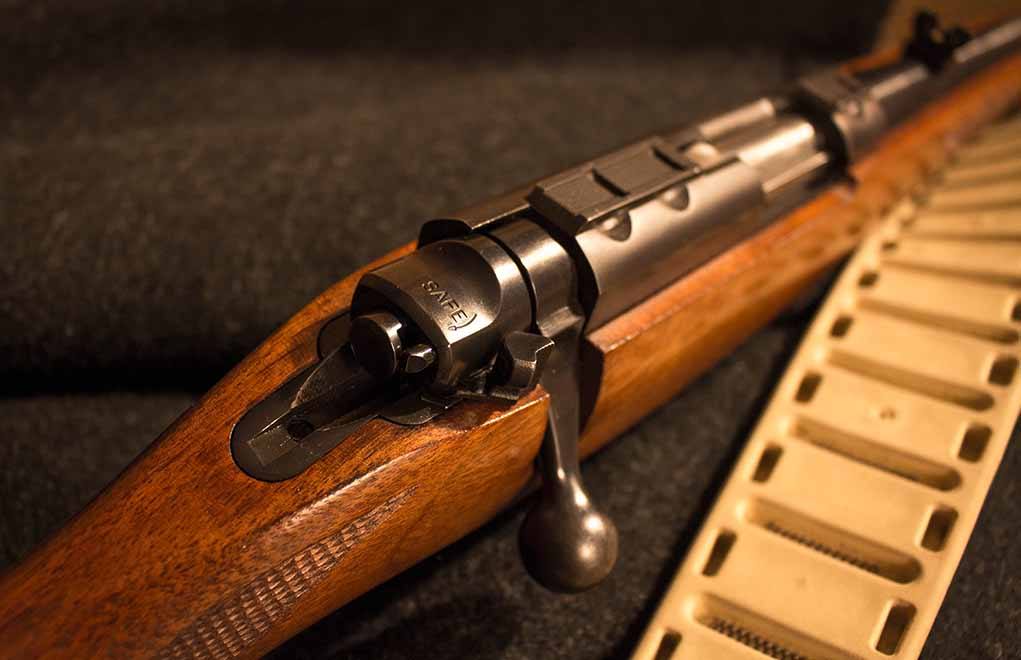
Additionally, it has been chambered in .22 WRM and .17 HMR for those who want a different rimfire experience.
Ruger has, over the years, temporarily discontinued certain models or chamberings, and the 77/22 is currently discontinued, with only the .22 Hornet chambering being available. While this is certainly not good news, I can say that a quick internet search on the common gun auction sites yielded a large number of 77/22 rifles for sale, in all three configurations, so those who would like add one to their collection will certainly have an opportunity to purchase one.
I will be the first to admit that the Ruger 10/22 platform is more popular than is the bolt-action version. However, owning a rifle with so many similar features of a common big game rifle — which you can practice with for pennies on a dollar and which will give a lifetime of hunting service — is definitely a good idea.
Everyone has a rifle that occupies a special place, especially those rifles of our youth. These are the guns that helped us cut our teeth and set us on a path that would — to one degree or another — change our lives. While I’ve been blessed enough to have spent time with a wide diversity of different rifles, from inexpensive to “she’s-going-to-kill-me-for-buying-this,” I reach for that little rimfire quite often, and I look forward to another 30 years of our relationship.
Editor's Note: This article originally appeared in the February 2019 issue of Gun Digest the Magazine.
For more information on the Ruger 77/22, please visit www.ruger.com.
Get More Ruger Info:
- Great Ruger Guns
- Ruger No. 1
- Ruger Precision Rifle
- Ruger Redhawk
- Ruger Super Redhawk
- Ruger Blackhawk
- Ruger Single Six
- Ruger 10/22
- Ruger LCR
- Ruger LCRx
- Ruger 77/44
- Ruger SR1911
- Ruger Hawkeye
- Ruger Mark IV
- Ruger SR-556
- Ruger LCP II
- Ruger American Magnum
- Ruger American Rifle
- Ruger Gunsite Scout Rifle
- Ruger SR-762
- Ruger Red Label
- Ruger SR40
- Ruger Single Nine
- Ruger P345

Next Step: Get your FREE Printable Target Pack
Enhance your shooting precision with our 62 MOA Targets, perfect for rifles and handguns. Crafted in collaboration with Storm Tactical for accuracy and versatility.
Subscribe to the Gun Digest email newsletter and get your downloadable target pack sent straight to your inbox. Stay updated with the latest firearms info in the industry.

![Best Concealed Carry Guns In 2024 [Field Tested] Wilson Combat EDC X9S 1](https://gundigest.com/wp-content/uploads/Wilson-Combat-EDC-X9S-1-324x160.jpg)




